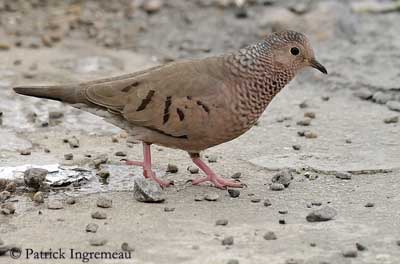
ORDER COLUMBIFORMES
FAMILY COLUMBIDAE
Pigeons and Doves
I think it is difficult to start such study without any comments about the three disappeared species, so different from our common pigeons and doves, but belonging to the same order, the Dodo (Raphus cucullatus) of Mauritius, the Rodrigues Solitaire (Pezophaps solitaria) and the Reunion Solitaire (Ornithaptera solitaria) endemics of the Mascarene Islands in SW Indian Ocean. These birds were terrestrial forest species, and their peculiar look was the result of their adaptation to the insular life on small islands where any predator occurred. The arrival of human life on these islands has involved the extinction of these three species.
These three species of the family Raphidae were “giants” compared to our Columbidae. Females weighed about 17 kg, whereas Dodo male weighed about 21 kg and Rodrigues Solitaire male some 28kg. Today, the largest living pigeon weights about 2 kg…
There is little resemblance to our pigeons, but if we look at the Samoan Tooth-billed Pigeon (Didunculus strigirostris), we can see that the bill, although much smaller, is very similar to that of the Dodo.
In addition, the characteristics of these three “old” species such as the loose plumage, the reduced wings, the naked facial skin and the broad bill are also visible in pigeon squabs.
Text by Nicole Bouglouan
Photographers :
Buysse Didier
Vision d’Oiseaux
Alfredo Colón
Puerto Rico Wildlife
Chrétien Marc
MURINUS
Fenerole Jean Michel
Photos d’Oiseaux
Garvie Steve
RAINBIRDER Photo galleries
Guillet Paul
Photos d’Oiseaux
Patrick Ingremeau
TAMANDUA
Jordan Eduardo Andrés
MIS AVES - AVES DE ARGENTINA
Mistry Niraj Vijaykumar
Photo Galleries
Montocchio Eugène
Galerie Photos Nature
Moul Bob
Nature Photography
Jean Marc Rabby
Des Ailes et des Plumes
Callie de Wet
Flickr Galleries
Philippe et Aline Wolfer
GALERIE
Bouglouan Nicole
PHOTOGRAPHIC RAMBLE
Sources :
HANDBOOK OF THE BIRDS OF THE WORLD vol 4 by Josep del Hoyo-Andrew Elliott-Jordi Sargatal - Lynx Edicions - ISBN: 8487334229
PIGEONS AND DOVES by David Gibbs, Eustace Barnes and John Cox - Pica Press Sussex - ISBN: 1873403607
THE HANDBOOK OF BIRD IDENTIFICATION FOR EUROPE AND THE WESTERN PALEARCTIC by Mark Beaman, Steve Madge - C.Helm - ISBN: 0713639601
L’ENCYCLOPEDIE MONDIALE DES OISEAUX - Dr Christopher M. Perrins - BORDAS - ISBN: 2040185607
Wikipedia (Wikipedia, The Free Encyclopedia)
BirdLife International (BirdLife International)
The Columbidae range in size from the tiny Common Ground-Dove (Columbina passerina) of about 30 grams, to the Western Crowned Pigeon of New Guinea which weight over 2 kg. The smallest species are named “doves” whereas the largest are called “pigeons”.

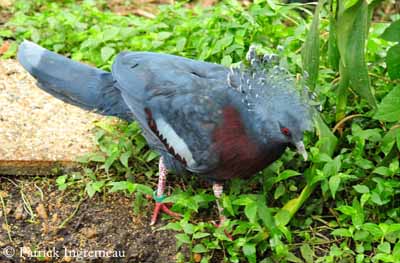
They are mainly arboreal, often living among the foliage of the trees. Most of them feed on the ground, although some species also feed in trees.
The typical characteristics of the members of this family include short bill, small head, short legs and compact body. The eyes are often surrounded by bare skin which colour varies according to the species.
They have large flight muscles, reflecting their excellent flying availabilities. The wing shape of each species let us know if the bird is migratory or not.
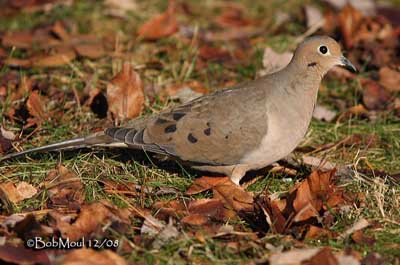
The short legs are typical of the arboreal genus Columba and of the fruit-eating forms Ptilinopus, Ducula and Macropygia. They are able to grasp strongly the branch and to hang upside down to reach a fruit.
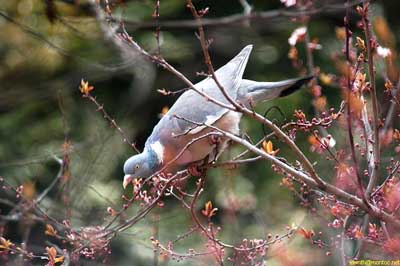
On the other hand, the more terrestrial species have longer legs, allowing them to live mainly on the ground.
Columbidae includes two groups, the seed-eaters and the fruit-eaters species.
The Columbinae or seed-eaters usually have cryptic plumages with buff, grey and brown colours, with two exceptions, the Chalcophaps doves which show iridescent green wings.
Some species may have purple or bronze sheen around the neck, breast or back, or on the wings.
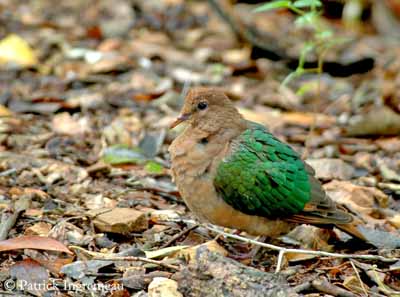
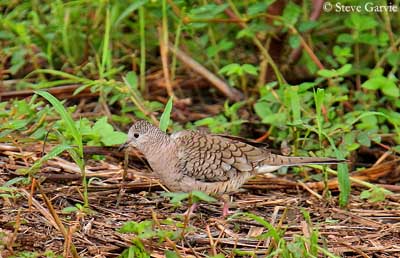
The fruit-eaters of genus Ptilinopus can be very coloured, with bright green plumage and red, purple, pink, yellow, black or white ornaments on crown, breast, rump or undertail-coverts.
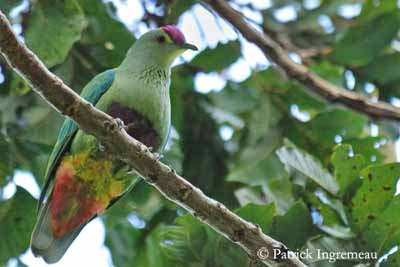
The blue-pigeons of genus Alectroenas of the Indian Ocean are azure-coloured, whereas the green-pigeons of genus Treron show soft green plumage with pastel coloured patches.
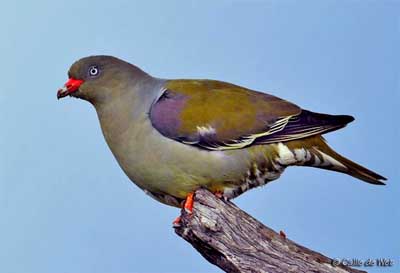
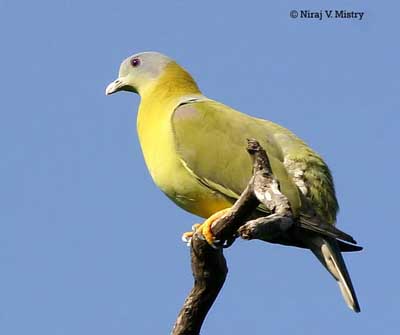
Usually, male and female are almost similar or similar, with male brighter than female.
In addition of their beautiful plumage, numerous pigeons show conspicuous crests or eye-rings playing an important role during the courtship displays.
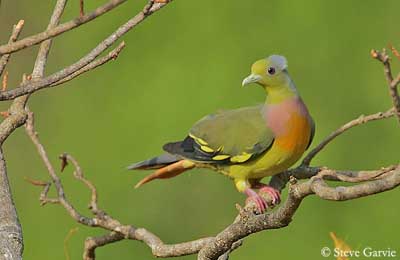
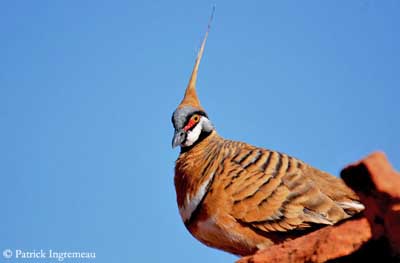
The Spinifex Pigeon (Geophaps plumifera) is a good example of long crest, and the Partridge Pigeon (Geophaps smithii) and the Diamond Dove (Geopelia cuneata) have brightly coloured eye-ring.
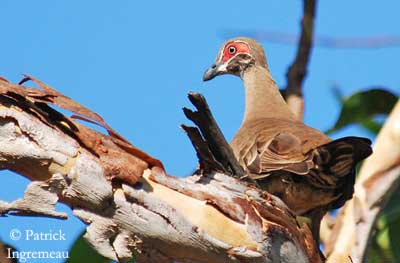
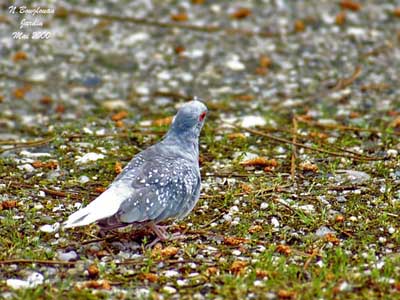
The nestlings are covered in sparse pale down white, yellow, brown or grey. The juvenile plumage replaces this down soon, but it is often still growing when the young leave the nest.
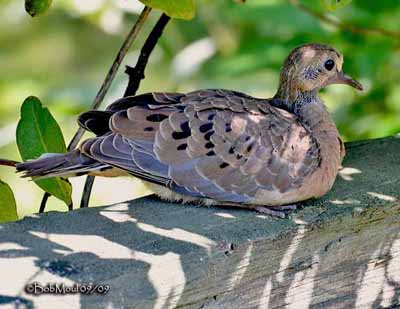
All species moult after the breeding season. The migratory species have faster moult than the sedentary birds.
Columbidae have special anatomical and behavioural mechanisms allowing them to live in habitats with extremely high or low temperatures.
In the hottest places, birds such as the Spinifex Pigeon forage in the shade in the early morning and rest in sheltered places among large boulders during the hottest hours of the day. This species dissipates the heat mainly through the skin.
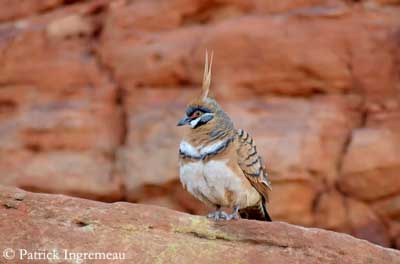
But at the other extreme in lowest temperature areas, the bird erects its feathers with tips touching each other, in order to trap the air warmed by the body.
On the other hand, in hottest conditions, the bird also erects its fathers, but the tips do not touch each other and the air pass between the feathers involving good water evaporation.
Pigeons and doves are living throughout the world except in Arctic and Antarctic regions. They frequent habitats from forest of all types, to open country such as savannahs, deserts, high areas above the tree-line, cliff sides and coral atolls.
In these habitats, the fruit-eaters such as Columba, Ptilinopus, Ducula and Treron forage by plucking fruits directly from the trees.
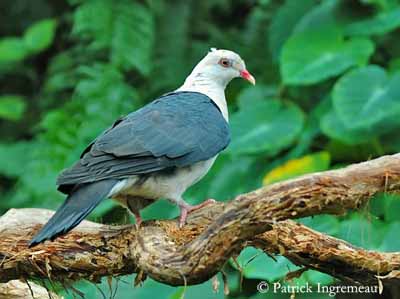
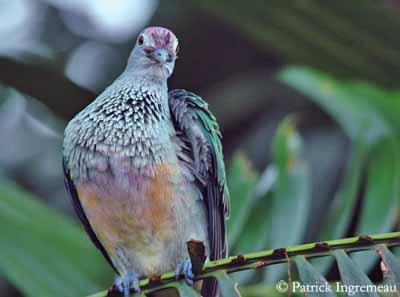
The ground-living species such as the Tambourine Dove (Turtur tympanistria) and the Chalcophaps doves nest and roost in trees but live mainly on the ground.
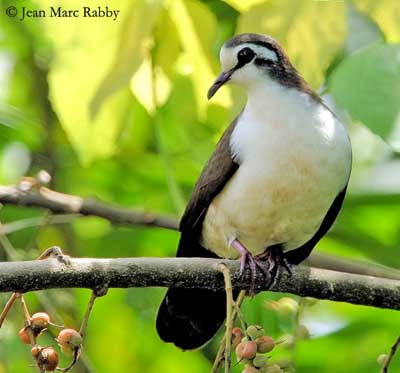
The crowned-pigeons of New Guinea are galliforme-like and terrestrial in their foraging behaviour.
The cuckoo-doves Macropygia of Asia and Australia also are terrestrial and forest-birds. They feed in the understorey, but also in trees and are very agile like the fruit-doves.
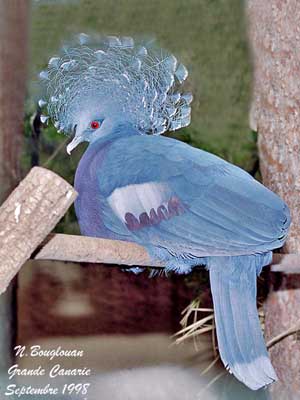
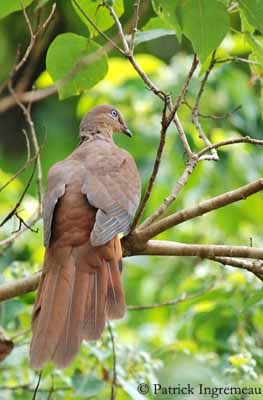
The birds living in open countries occupy savannahs, and mainly grasslands with scattered trees. Crested Pigeon (Ocyphaps lophotes), Bar-shouldered Dove (Geopelia humeralis) and Peaceful Dove (Geopelia placida) inhabit this type of areas.
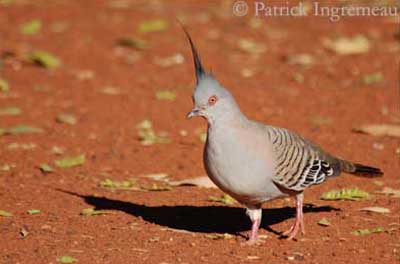
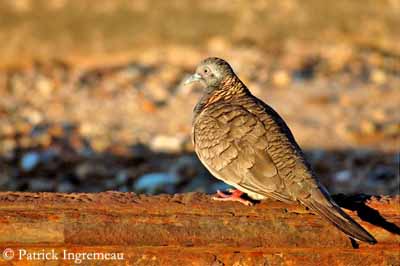
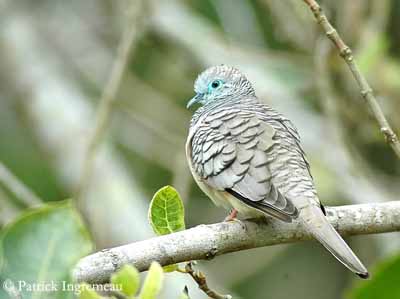
The African Mourning Dove (Streptopelia decipiens) and the Namaqua Dove (Oena capensis) live in African savannahs.
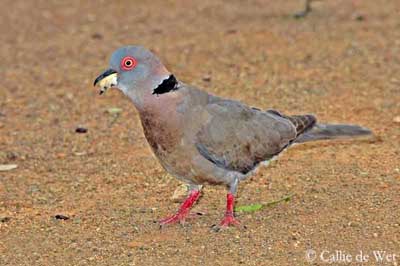
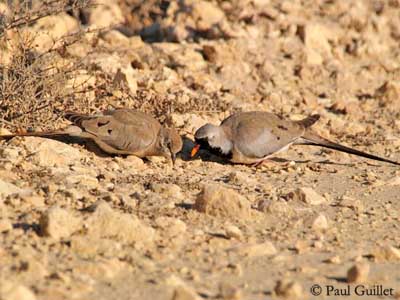
Other species live in swamp forests, open scrub and coastal forests, and some of them breed in large colonies in mangroves like the Torresian Imperial-pigeon (Ducula spilorrhoa) of Australia.
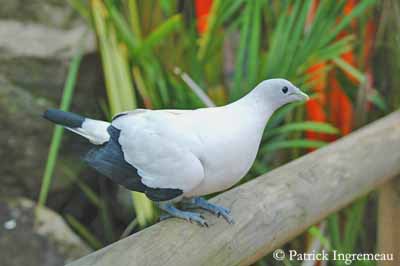
Cliff-dwelling species are mainly found in the Old World. The widely distributed Rock Dove (Columba livia) occurs on rock faces and mostly at coastal sites, but also deep inland in several parts of Eurasia.
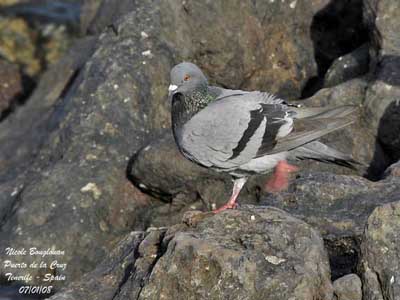
Some species are completely terrestrial, such as the following Australian species, Chestnut-quilled Dove (Petrophassa rufipennis), White-quilled Rock-pigeon (Petrophassa albipennis), Flock Bronzewing (Phaps histrionica) and Spinifex Pigeon. These species have almost similar behaviour that Galliformes which lack in this country.
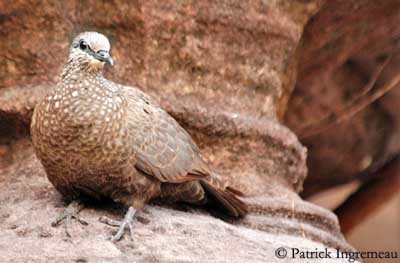
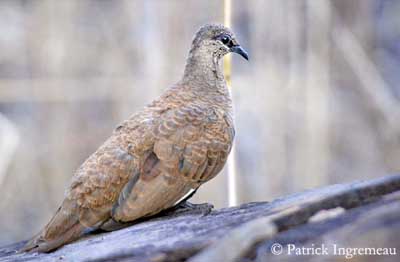
The Columbidae live in a wide variety of habitats, showing how adaptable these birds are!
They may be gregarious or not. Some species such as the Flock Bronzewing (Phaps histrionica) live in large flocks all year round and much more after the breeding season. Others like the Ruddy Quail-dove (Geotrygon montana) are seen alone or in pairs and never form flocks.
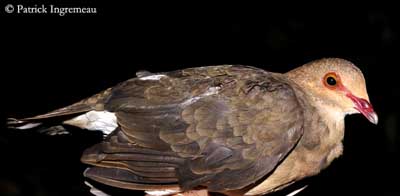
In the same way, they may nest colonially or in scattered pairs.
They form large migrating flocks. The Eared Doves (Zenaida auriculata) are spectacular in migration, with flocks of thousands at food sources.
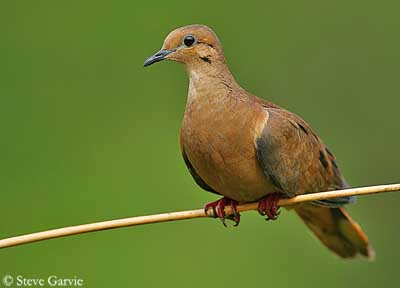
Columbidae’s vocalizations include simple calls of short duration, used as alarm, contact and threat. Songs are more elaborate and used for territoriality, advertising and attracting a mate.
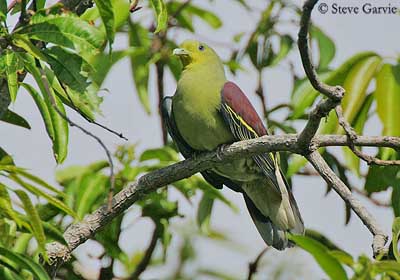
The most common sound is “coo” or “croo” uttered in various series. But the Pink-necked Green-pigeon (Treron vernans) utters “waak” calls very different. Some doves give whistles or barks.
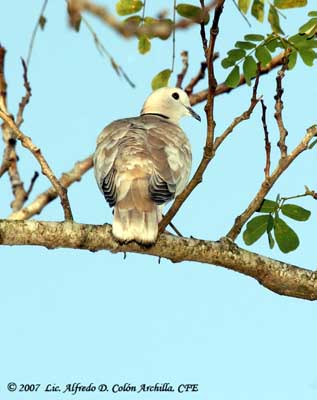
Females of genus Ptilinopus call as much as their males. Their songs are often higher-pitched than the males’ songs.
Alarm calls are produced with body held upright. Aggressive calls are uttered when the birds are fighting. The soft “purring” is used as bonds between adults and young or between mates.
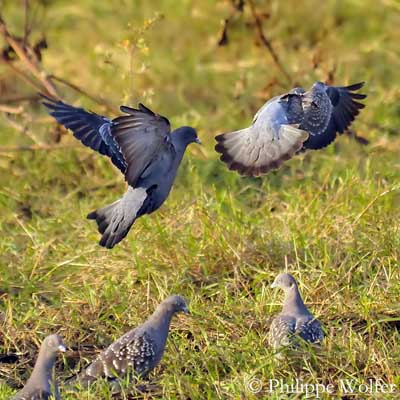
Spot-winged
Pigeon
Columbidae include frugivorous and gravivorous species. The seed-eaters feed on the ground and swallow the grain whole. They often search for food by “bill-sweeping” among leaves and twigs to expose seeds and small invertebrates.
The fruit-eaters pluck the fruits and other food items directly from the trees. They remove the fruit from the stem with a twisting movement of the head.
Some species supplement their diet with vegetation such as leaves, buds and flowers, and also invertebrates according to the season.
Columbidae drink by sucking rather than scooping. The water helps them to digest the food, and to prepare the crop-milk used for feeding their young.
The breeding season is the moment of the displays. Several species of genus Columba, Streptopelia, Turtur and Columbina perform displays around or at the potential nest-site. Postures and movements are performed such as crouching, fluttering wings, scratching feet… These displays are associated with pair formation, nest building, aggression and defence.
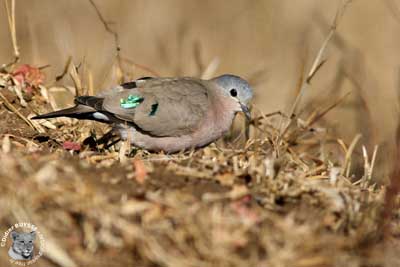
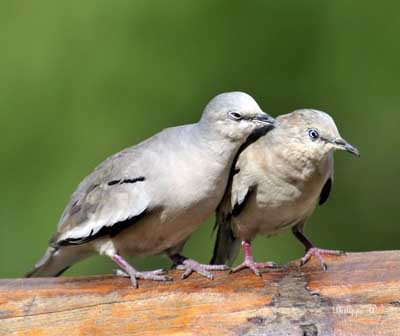
Many doves also perform aerial displays. The commonest shows the male taking off from a high perch with slow, deep wing-beats, followed by several audible wing-claps before to glide with fanned tail and wings held up in V. Glide is followed by another clapping phase, both repeated several times.
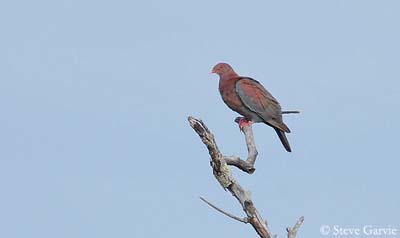
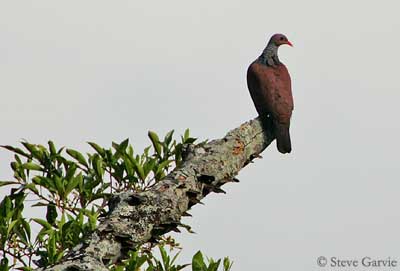
This type of flight is absent in ground-living doves, and mainly in the Australian species such as Spinifex, Squatter, Partridge and Wonga Pigeons, and the forest-living Chalcophaps doves.
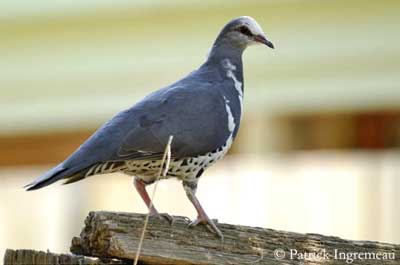
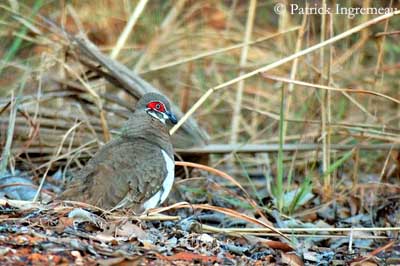
As a prelude to pair formation and copulation, numerous pigeons perform a “bow-coo” display. The male inflates his crop, holds his body, and with the bill pointing down, it lowers the body in a bow while uttering coos’ series close to the female. It may make short flights over her, and then, it struts and dances again.
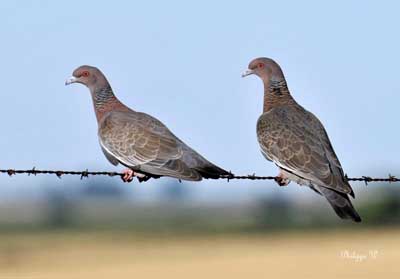
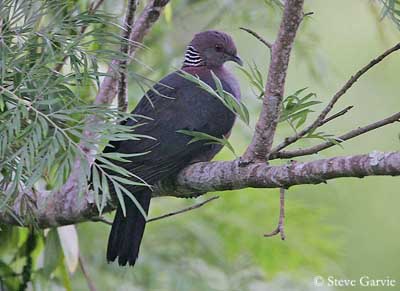
The male expose the ornaments and/or the bright colours of his plumage during these displays, such as crest, bare facial skin and metallic sheen of the wings or the neck.
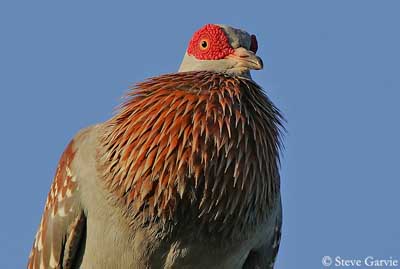
Pairs are monogamous, at least for the season.
Usually, the male carries nest materials to the female which arranges them and builds the nest. The nest consists of a platform or a shallow cup made with twigs or dead stems of several plants. Such nest is a loose and flimsy structure and may dry out quickly after the rain.
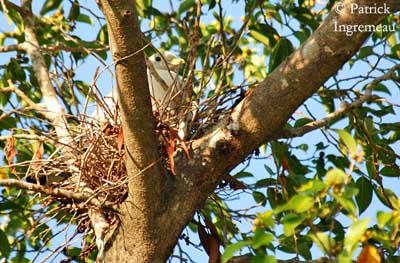
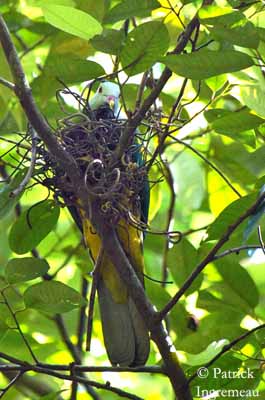
However, some nests are more “worked” such as in the Superb Fruit-doves (Ptilinopus superbus) which nest is made with sticks forked and intertwined together, giving a strong result.
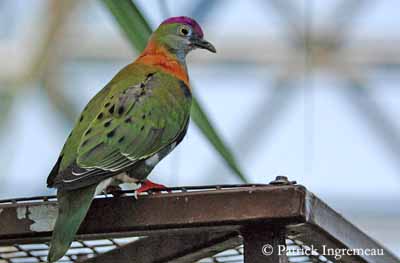
In the same way, the nest of the White-tipped Dove (Leptotila verreauxi) may be very bulky. The nests of the ground doves of genus Columbina are stronger than in other species.
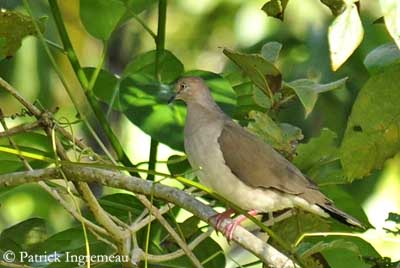
According to the species and the range, the nest may be situated in crevices in cliffs (Rock Dove and Snow Pigeon), while others nest in trees or on the ground (Spinifex Pigeon and Flock Bronzewing), in vegetation, among boulders or in holes.
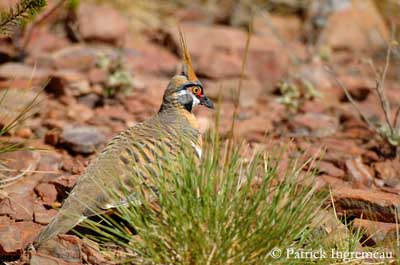
Most species nest solitary, but some of them nest colonially. The Nicobar Pigeon (Caloenas nicobarica) may form colonies of thousands of nests.
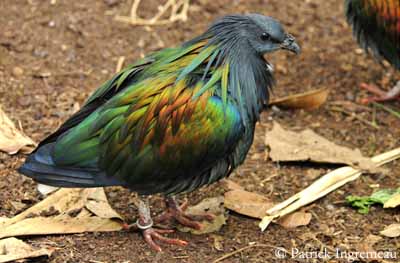
Clutch size is small, with only one or two eggs. The fruit-doves are dependent on fruit for their diet, and usually, these species lays only one egg. The seed-eating doves often lay two eggs. Both male and female incubate and protect the clutch. Incubation lasts about 11-16 days in smaller species, and 17-30 days in larger.
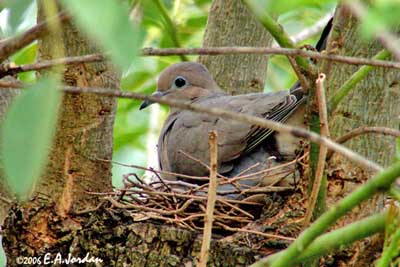
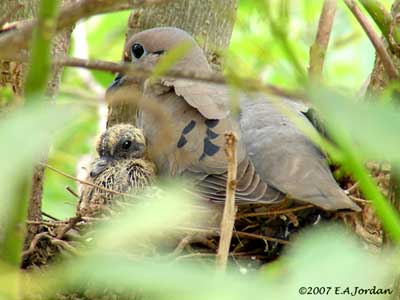
Nestlings are fed with regurgitated crop-milk directly into the bill. The lower mandible is boat-shaped and broader than the upper, and used as receptacle. The chicks are dependent on parents during about 40 days after hatching, and adults continue to produce this peculiar food.
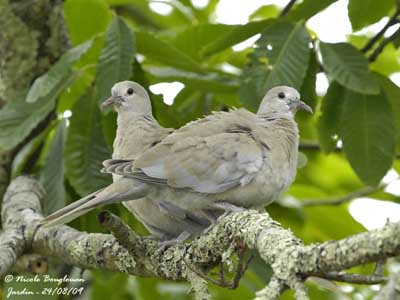
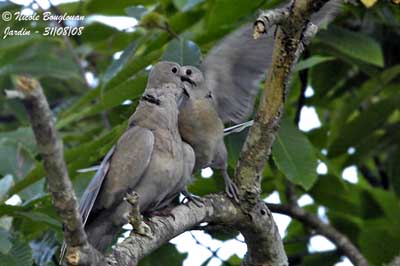
The young fledge 10-17 days later in small species, and at 20-36 days old for larger ones. Chicks disturbed by a predator may leave the nest prematurely.
Columbidae usually breed at one year, sometimes the same year in which they were hatched.
Most doves are sedentary. Some tend to make local movements and may form post-breeding flocks. Others are nomadic and visit several food areas according to the production.
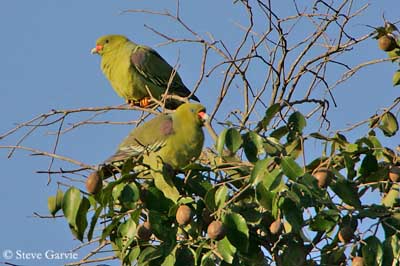
The high-altitude species of the Himalayas or the Andes perform altitudinal migrations in winter, and reach lower elevations at the end of the breeding season. The Plumbous Pigeon (Patagioenas plumbea) of Brazil and the Ruddy Pigeon (Patagioenas subvinacea) of Costa Rica perform altitudinal movements.
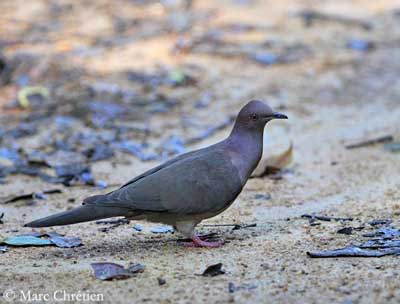
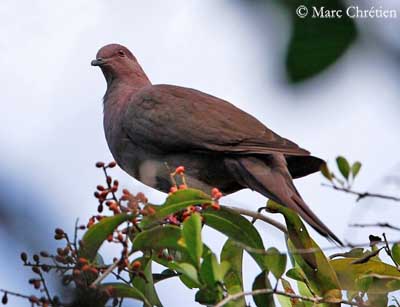
The European Turtle-dove (Streptopelia turtur) nests in central Asia, Europe and North Africa. The northern populations fly southwards in autumn and cross the Mediterranean to reach the Sahara and equatorial Africa.
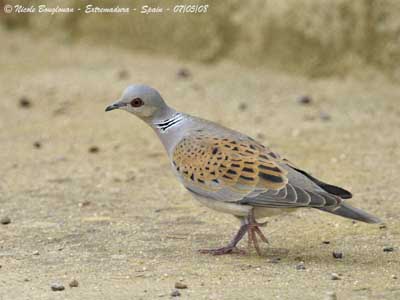
Some populations of North American pigeons are migratory and usually, female and young winter further south than males.
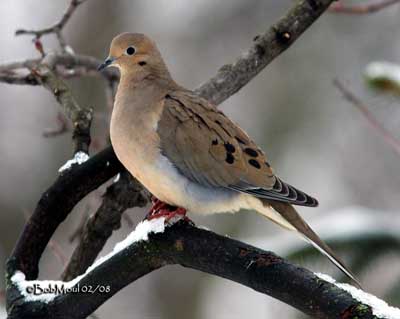
Columbidae perform strong, fast flight. They are very powerful and can sustain long-distance flights. They are able to reach 50/65 km per hour in flight, and numerous pigeons are used as racing pigeons and may fly 800-1000 km per day.
Pigeons and doves have several predators such as birds of prey, snakes and mammals like introduced cats and dogs, especially on islands.
However, the Columbidae are very adaptable and have benefited from human developments and pressure. Changes of their habitat may threaten some species but favour others. Hunting kills millions of birds every year because their flesh is rich in proteins and very appreciated by humans, but the populations remain stable and are even increasing in several parts of the range.
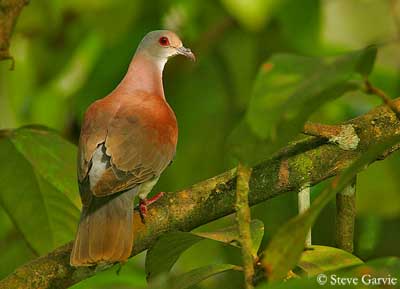
Several species are extinct on islands, but persist in others, according to the partially suitable habitat and hunting pressure.
The main threat is always the habitat loss, not only from human but also from hurricanes, fires and habitat alteration by intense grazing from domestic or feral livestock.
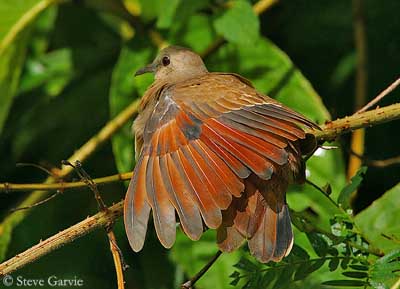
Several programs of reintroduction are on their way, such as the breeding programme for the Puerto Rican Plain Pigeon, the Pink Pigeon of Mauritius, the Socorro Dove of Mexico and numerous others.
Pigeons and doves are often mentioned in folklore, religion, legends of diverse cultures since long time.
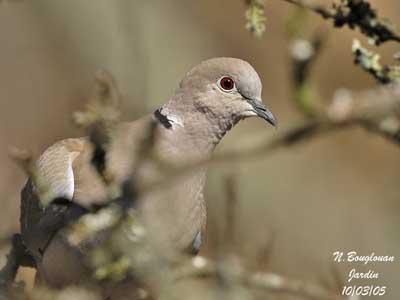
A lovely Portuguese legend tells us that while all the birds were learning how to build their nest with God, the doves were playing. That explains why they make so flimsy nests!
Doves are symbol of longevity, faithfulness, fertility and love.
Domestic pigeons were important couriers during the wars, and have been used for specific flights, such as to carry vital information.
Pigeons and Doves are closely associated to humans, and we always are fascinated by their soft coos and their elegance. About 320 species are included in the Order Columbiformes, a large group of smart, beautiful and adaptable birds.
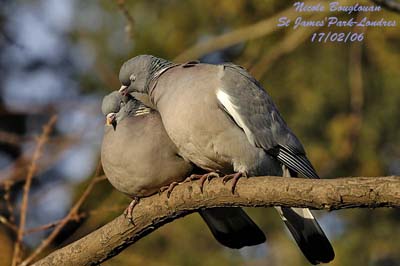
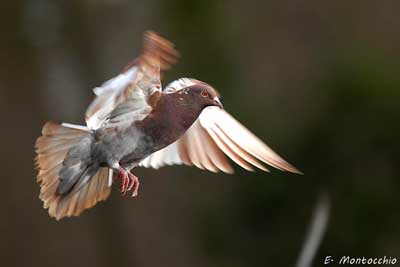
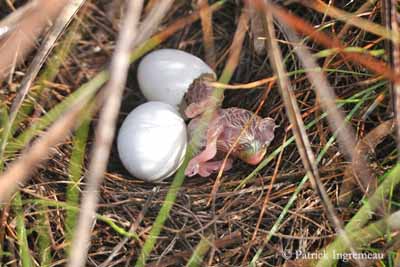
Common Ground Dove - hatching and new life
(Picture taken from a window, without any disturbance for the birds)